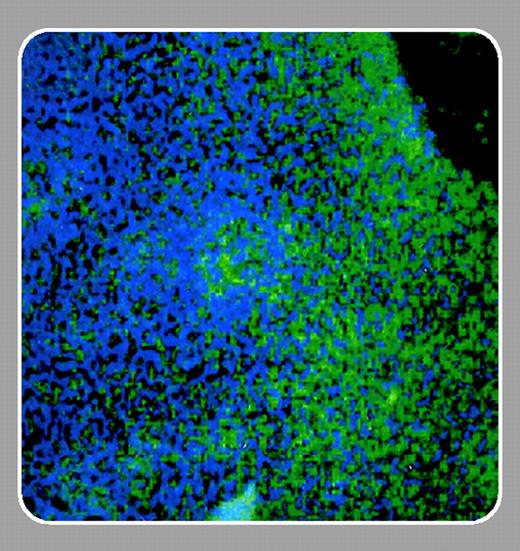Human embryonic stem (huES) cells have been widely touted as an important source of cells and tissues for future transplantation and regenerative medicine therapies. Since the derivation and propagation of huES cell lines was first described in 1998,1 several research groups have defined methods to derive and characterize cell lineages of therapeutic interest. These differentiated cell types derived from huES cells include blood cells, endothelial cells, neurons, cardiomyocytes, and bone.
Lost in the rush to produce huES cell–based therapies have been efforts to better characterize the basic biology of the undifferentiated ES cells. These unique cells are able to self-renew as undifferentiated cells in culture essentially indefinitely. Yet, when placed in the proper environment, ES cells retain the ability to form any cell type within the body. These dual capacities make ES cells an especially intriguing and informative resource to understand early human embryology. While most developmental biology research uses valuable model organisms such as worms, flies, fish, and mice, we now have the ability to study the very beginning stages of development in a human model system. Indeed, the use of huES cells to characterize the molecular and genetic mechanisms that lead to early cell fate decisions in a human developmental biology system will impact many fields, and the importance of this work will likely supercede therapies directly derived from these cells.FIG1
Toward this goal, Bhattacharya and colleagues (page 2956) perform an extensive cDNA microarray analysis of 6 different huES cell lines. There are several important findings in this informative analysis. First, from a genetic standpoint, the 6 ES cell lines are remarkably similar. This was not a foregone conclusion or trivial finding, since these cell lines are obtained from 3 different sources and cultured with subtle differences. Yet 92 of the 98 most highly expressed genes were common to all 6 ES cell lines. Second, there is relatively little similarity between the most highly expressed genes in the huES cells as compared with mouse ES cell lines. Depending on the analysis used for comparison, only 15% to 35% of genes are conserved between ES cells of mouse and man. Similar results are found in other studies.2,3 Third, huES cells express many novel genes and hypothetical proteins that remain poorly characterized. Further investigation of these gene products will likely be helpful to gain a better understanding of the self-renewal potential of huES cells and other stem cell populations. Fourth, undifferentiated huES cells express several genes that are typically thought to be lineage specific (eg, skin and cardiac proteins). Therefore, it is crucial that studies that use RT-PCR analysis to demonstrate lineage-specific differentiation also examine the specific genes in the starting population of undifferentiated ES cells. Since huES cells may have low levels of “promiscuous” gene expression, and ES cell cultures may contain some differentiated cells that are not readily apparent, quantitative analysis of gene transcripts is warranted for comparison to differentiated cell populations.
At least 3 other recent reports also characterize gene expression profiles in huES cells.2-4 Since each study is done in a different manner, they nicely complement each other. One important conclusion from these and other huES cell–based studies is so obvious it is often overlooked or left unstated—humans are not mice. The time is now right to translate related stem cell research to human models.


